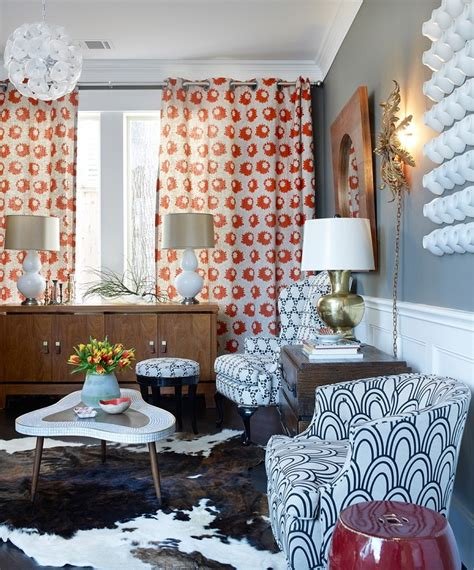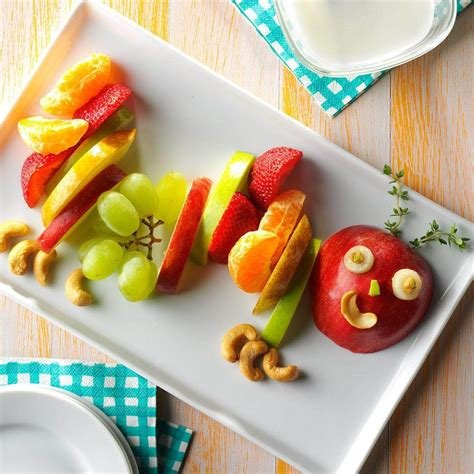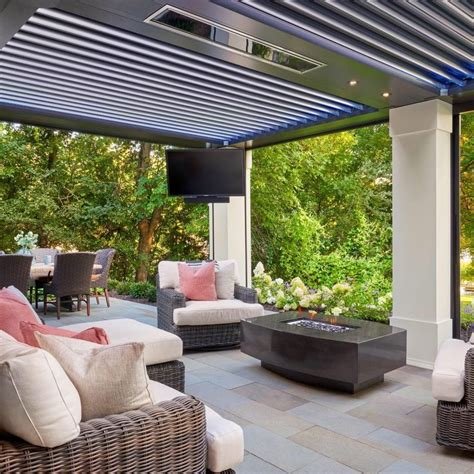The Art of Mixing Patterns in Decoration
Pattern mixing in interior design can be a powerful way to add depth, texture, and visual interest to a space. However, it can also be a daunting prospect for beginners. The key is to understand the art of mixing patterns effectively in decoration. From choosing complementary patterns to playing with scale and proportion, there are various techniques to achieve a balanced and cohesive look. In this blog post, we will explore the different aspects of pattern mixing in interior design and provide valuable tips for beginners. Whether you’re looking to experiment with pattern mixing in different rooms or create a harmonious and personalized pattern mix, this guide will help you navigate the world of pattern mixing with confidence. Get ready to unleash your creativity and transform your space with the art of mixing patterns in decoration.
Understanding Pattern Mixing in Interior Design
When it comes to interior design, pattern mixing can be a daunting task for many homeowners. It involves combining different patterns, textures, and colors to create a cohesive and visually appealing space. Understanding the principles of pattern mixing is essential for achieving a balanced and harmonious look in your home.
One key aspect of pattern mixing is choosing complementary patterns that work well together. This involves considering the scale and proportion of the patterns, as well as the color palette. For example, pairing a large floral pattern with a small geometric one can create visual interest and balance in a room.
Another important consideration in pattern mixing is using color to tie together different patterns. By incorporating a common color or tone across various patterns, you can create a sense of unity and coherence in your design. This could be achieved through decorative pillows, rugs, or curtains that feature overlapping colors.
Experimenting with pattern mixing in different rooms of your home can also help you understand how to achieve a harmonious and personalized pattern mix. Whether it’s in the living room, bedroom, or dining area, exploring different pattern pairings for visual interest can enhance the overall aesthetic of your space.
Choosing Complementary Patterns for a Cohesive Look
When it comes to interior design, mixing patterns can either make or break a space. One way to ensure a cohesive and visually appealing look is by choosing complementary patterns. By selecting patterns that work well together, you can create a harmonious and balanced design that ties the room together.
One key aspect of choosing complementary patterns is to consider the scale of the patterns. Mixing different sizes of patterns, such as a large floral print with a small geometric pattern, can add visual interest while still maintaining a cohesive look. It’s important to balance the scale and proportion of patterns to avoid overwhelming the space.
Another factor to consider when choosing complementary patterns is the color palette. Opt for patterns with similar or complementary colors to create a cohesive look. Using a consistent color scheme can help tie together different patterns and create a seamless design.
Additionally, consider the style of the patterns when mixing and matching. Pairing traditional patterns with modern prints or mixing different textures can add depth and variety to the space. Experiment with different pattern pairings to find the right balance that suits your personal style while creating a cohesive look.
Creating a Balanced Mix of Patterns in a Space
One of the key elements of interior design is pattern mixing, but achieving a balanced mix of patterns in a space can be a daunting task. However, with the right approach and understanding, it is possible to create a harmonious and visually appealing combination of patterns.
When creating a balanced mix of patterns in a space, it’s important to consider the scale and proportion of each pattern. Mixing patterns of different scales can create visual interest and prevent the space from feeling overwhelming. For example, pairing a large-scale floral print with a small-scale geometric pattern can create a balanced and cohesive look.
Another important factor to consider when mixing patterns is the color palette. Choosing complementary colors for the patterns can tie them together and create a cohesive look. Using a neutral base color as a background for the patterns can also help create a sense of balance and prevent the space from feeling chaotic.
Layering patterns is another technique to create depth and texture in a space. This can be achieved by combining different textures such as velvet, linen, or silk with the patterns, adding visual interest and dimension to the room.
Playing with Scale and Proportion in Pattern Mixing
When it comes to interior design, one of the most challenging yet rewarding techniques is pattern mixing. But what sets a well-designed space apart from one that feels overwhelming is the careful consideration of scale and proportion. Playing with scale and proportion in pattern mixing can create a visually appealing and harmonious space.
One way to play with scale and proportion is by mixing patterns of different sizes. This can be achieved by pairing a large-scale floral print with a smaller geometric pattern. The contrast in size adds depth and visual interest to the space.
Another technique is to use patterns of similar scale but varying proportions. For example, combining slim stripes with larger, more organic shapes can create a balanced and cohesive look. This creates a sense of harmony while still adding visual intrigue.
It’s important to remember that playing with scale and proportion in pattern mixing is all about balance. Too many large-scale patterns can overwhelm a space, while too many small-scale patterns can make it feel busy and chaotic. Finding the right balance is key to achieving a well-designed and visually pleasing interior.
Mixing Patterns: Tips for Beginners
When it comes to mixing patterns in interior design, it can be a daunting task for beginners. However, with the right tips and techniques, anyone can achieve a beautifully curated look that reflects their personal style. One key tip for beginners is to start with smaller, more subtle patterns before diving into bolder prints. This allows for a gentle introduction to pattern mixing without feeling overwhelmed.
Another helpful tip is to stick to a cohesive color palette when mixing patterns. By choosing complementary colors, beginners can create a harmonious look that ties different patterns together. It’s also important to consider the scale and proportion of each pattern, aiming for a mix of large, medium, and small-scale prints for visual interest.
For beginners, it’s recommended to layer patterns in a gradual manner. This means starting with a single patterned piece, such as a rug or accent pillow, and gradually adding in more patterns as confidence grows. Playing with different textures can also add depth to the overall look, creating a visually dynamic space.
Lastly, experimenting with pattern pairings in different rooms can help beginners gain a better understanding of what works best for their personal style. Whether it’s mixing florals with geometric prints or stripes with polka dots, trying different combinations is a fun and creative way to develop a unique pattern mixing style.
Exploring Different Pattern Pairings for Visual Interest
When it comes to interior design, mixing patterns can add visual interest and depth to a space. One way to achieve this is by exploring different pattern pairings to create a cohesive and harmonious look.
Firstly, consider mixing geometric patterns with organic ones to create contrast and balance. For example, pairing a bold, geometric rug with a floral or botanical print on throw pillows can create a dynamic and visually stimulating combination.
Another option is to mix different scales of patterns, such as pairing a large-scale stripe with a small-scale polka dot. This creates a sense of movement and dimension within the space.
Additionally, consider mixing patterns of different textures and finishes. For example, pairing a shiny, textured fabric with a matte, flat one can add depth and visual interest to the overall design.
Using Color to Tie Together Mixed Patterns
When it comes to mixing patterns in interior design, one important factor to consider is the use of color to tie everything together. Color can play a crucial role in creating cohesion and harmony within a space, especially when dealing with multiple patterns. By strategically incorporating color throughout the room, you can create a sense of unity that pulls the various patterns together.
One effective way to use color to tie together mixed patterns is by choosing a dominant hue that runs through all the patterns in the space. Whether it’s a bold accent color or a more neutral tone, having a common color thread can help create a sense of visual continuity and balance. This dominant color can be used in different intensities or shades within the various patterns, creating a cohesive look that feels intentional and thoughtfully curated.
In addition to choosing a dominant color, using complementary colors can also help bring together mixed patterns in a space. By selecting colors that are opposite each other on the color wheel, you can create a visually appealing contrast that adds depth and interest to the overall design. Using complementary colors in the patterns can help create a striking yet cohesive look that ties the different elements together.
Ultimately, utilizing color to tie together mixed patterns in interior design requires a thoughtful approach and an understanding of how color can impact the overall look and feel of a space. By considering color as a unifying element, you can create a well-balanced and visually appealing mix of patterns that feels cohesive and intentional.
Layering Patterns for Depth and Texture
Layering patterns in interior design is a great way to add depth and texture to a space. By combining different prints and fabrics, you can create a visually interesting and dynamic look that adds character and personality to your home.
One way to create depth and texture in your space is to layer different patterns in similar color tones. For example, you could mix a geometric print with a floral print in shades of blue to create a cohesive and harmonious look. This will add visual interest without overwhelming the space.
Another option for adding depth and texture is to mix patterns of different scales. Combining a small-scale print with a larger-scale print can create a sense of balance and dimension in a room. For instance, you could layer a small floral print with a larger plaid or stripe for a striking and visually appealing effect.
Don’t be afraid to experiment with different textures as well. Mixing materials such as velvet, silk, and linen can add richness and depth to your patterns, creating a luxurious and inviting atmosphere in your home.
Experimenting with Pattern Mixing in Different Rooms
Experimenting with pattern mixing in different rooms can be a fun and creative way to add visual interest and personality to your home. Whether you are working with a living room, bedroom, or even a home office, there are endless possibilities for incorporating different patterns to achieve a cohesive and harmonious look.
One effective way to experiment with pattern mixing in different rooms is to start with a neutral base. This could be a neutral-colored sofa, bedding, or area rug. By creating a neutral foundation, you can then layer on different patterns in the form of throw pillows, curtains, and accent pieces to add depth and texture to the space.
Another key tip for experimenting with pattern mixing in different rooms is to consider the scale and proportion of the patterns. Mixing large-scale patterns with smaller-scale ones can create a visually dynamic and balanced look. For example, pairing a large floral print with a smaller geometric pattern can create an interesting contrast.
Lastly, don’t be afraid to mix and match different types of patterns, such as stripes, florals, plaids, and abstract prints. The key is to tie everything together with a cohesive color scheme. By using color to connect the mixed patterns, you can achieve a harmonious and personalized pattern mix that reflects your unique style and taste.
Achieving a Harmonious and Personalized Pattern Mix
When it comes to achieving a harmonious and personalized pattern mix in interior design, there are a few key principles to keep in mind. The first is to choose patterns that reflect your personal style and taste. Whether you prefer bold, graphic patterns or more subtle, organic designs, selecting patterns that resonate with you will help you create a space that feels uniquely yours.
Another important aspect of achieving a personalized pattern mix is to consider the scale and proportion of the patterns you are using. Mixing large-scale patterns with smaller, more intricate designs can create visual interest and depth in a space. It’s also essential to pay attention to the color palette of the patterns you’re incorporating. By choosing patterns that share similar hues or complementary colors, you can create a cohesive and harmonious look.
Layering patterns is another technique that can help you achieve a personalized and dynamic mix. By layering different textures, such as a soft floral print with a geometric pattern or a classic stripe with a whimsical polka dot, you can create a space that feels rich and inviting. Finally, don’t be afraid to experiment with pattern mixing in different rooms of your home. Whether you’re mixing patterns in your living room, bedroom, or even your kitchen, embracing pattern mixing as a design element can help you create a space that truly reflects your personality and style.
By following these principles and guidelines, you can achieve a harmonious and personalized pattern mix in your home that feels both cohesive and unique to you. Remember to choose patterns that resonate with your personal style, consider scale and proportion, pay attention to color, layer patterns for depth and texture, and don’t be afraid to experiment in different rooms. With these tips in mind, you can create a space that feels truly personal and inviting.
Frequently Asked Questions
What is pattern mixing in interior design?
Pattern mixing in interior design refers to the practice of combining different patterns, textures, and colors in a space to create visual interest and a personalized, cohesive look.
How can I choose complementary patterns for a cohesive look?
To choose complementary patterns for a cohesive look, you can consider the color palette, scale, and style of the patterns. Opt for a mix of small, medium, and large-scale patterns in coordinating colors and styles.
What are some tips for beginners when it comes to mixing patterns?
For beginners, start by sticking to a consistent color palette, mix different types of patterns (e.g., florals, stripes, geometric), and use solid colors as grounding elements to balance out the patterns.
How can I use color to tie together mixed patterns?
You can use a common color from the different patterns to tie them together. Consider using a dominant color from one pattern as the accent color in another, or use a neutral color to unify the patterns.
What are some different pattern pairings I can explore for visual interest?
You can explore pairing stripes with florals, geometric patterns with organic motifs, polka dots with plaids, or abstract prints with traditional patterns to create visual interest in a space.
How can I achieve a harmonious mix of patterns in different rooms?
To achieve a harmonious mix of patterns in different rooms, consider carrying over a common color or pattern from one room to another, ensuring a sense of cohesion and flow throughout the space.
What are some ways to layer patterns for depth and texture?
You can layer patterns by mixing different textiles (e.g., rugs, pillows, curtains), using varying scales of patterns, and incorporating textured fabrics (e.g., velvet, linen) to add depth and visual interest to a space.






